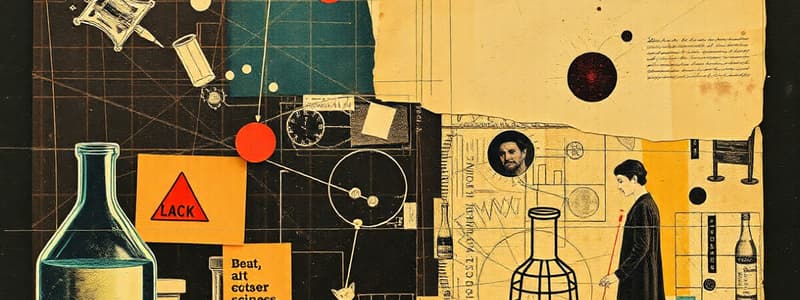Podcast
Questions and Answers
What is the mass number of an atom if it has 23 protons and 27 neutrons?
What is the mass number of an atom if it has 23 protons and 27 neutrons?
- 56
- 50 (correct)
- 23
- 27
How can you determine the number of neutrons in an atom?
How can you determine the number of neutrons in an atom?
- By adding the number of protons to the atomic number.
- By subtracting the head count of protons from the atomic mass.
- By subtracting the atomic number from the mass number. (correct)
- By equating the number of neutrons to electrons.
Which of the following statements about isotopes is true?
Which of the following statements about isotopes is true?
- Isotopes of an element have different atomic numbers.
- All isotopes of an element have different chemical properties.
- Isotopes have different masses due to varying numbers of neutrons. (correct)
- Isotopes have the same number of protons but different numbers of electrons.
If an element has an atomic number of 12, how many electrons does a neutral atom of this element have?
If an element has an atomic number of 12, how many electrons does a neutral atom of this element have?
What is the atomic mass also known as?
What is the atomic mass also known as?
Which formula correctly represents the calculation of the mass number?
Which formula correctly represents the calculation of the mass number?
In an isotopic notation of an element, what does the letter 'Z' represent?
In an isotopic notation of an element, what does the letter 'Z' represent?
What happens to the total number of protons and neutrons when comparing isotopes of the same element?
What happens to the total number of protons and neutrons when comparing isotopes of the same element?
Study Notes
### Atomic Mass, Mass Number, and Isotopes
- Atomic Mass: The weighted average mass of an element's atoms, considering all naturally occurring isotopes and their abundances. Measured in atomic mass units (amu) or Daltons (Da).
- Mass Number: The total number of protons and neutrons in an atomic nucleus. It's approximately equal to the atomic mass of the atom in atomic mass units.
- Atomic Number: The number of protons in the nucleus of an atom. In a neutral atom, the number of protons equals the number of electrons.
- Isotopes: Forms of an element with different numbers of neutrons. They have the same atomic number and proton count but varying atomic masses. Isotopes of an element share similar chemical properties but differ in nuclear properties.
- Writing an Isotope: The notation
C Ais used to represent an isotope, whereArepresents the mass number,Zrepresents the number of protons, andCrepresents the element. - Calculating Protons, Electrons, and Neutrons:
- Atomic Number = Number of Protons
- Number of Protons = Number of Electrons (in a neutral atom)
- Mass Number = Protons + Neutrons
- Isotope Abundance: The percentage or fraction of each isotope present in a naturally occurring sample of an element.
Calculating Neutrons
- To calculate the number of neutrons in an atom, use the formula:
n = A - Znis the number of neutrons,Ais the mass number, andZis the number of protons.
- For example, if an atom has a mass number of 79 and 35 electrons (meaning 35 protons), the number of neutrons is calculated as follows:
n = 79 - 35 = 44
Studying That Suits You
Use AI to generate personalized quizzes and flashcards to suit your learning preferences.
Related Documents
Description
This quiz covers fundamental concepts related to atomic mass, mass number, and isotopes. Explore the definitions, differences, and calculations involving protons, neutrons, and electrons in various atomic structures. Test your understanding of these critical topics in chemistry.




